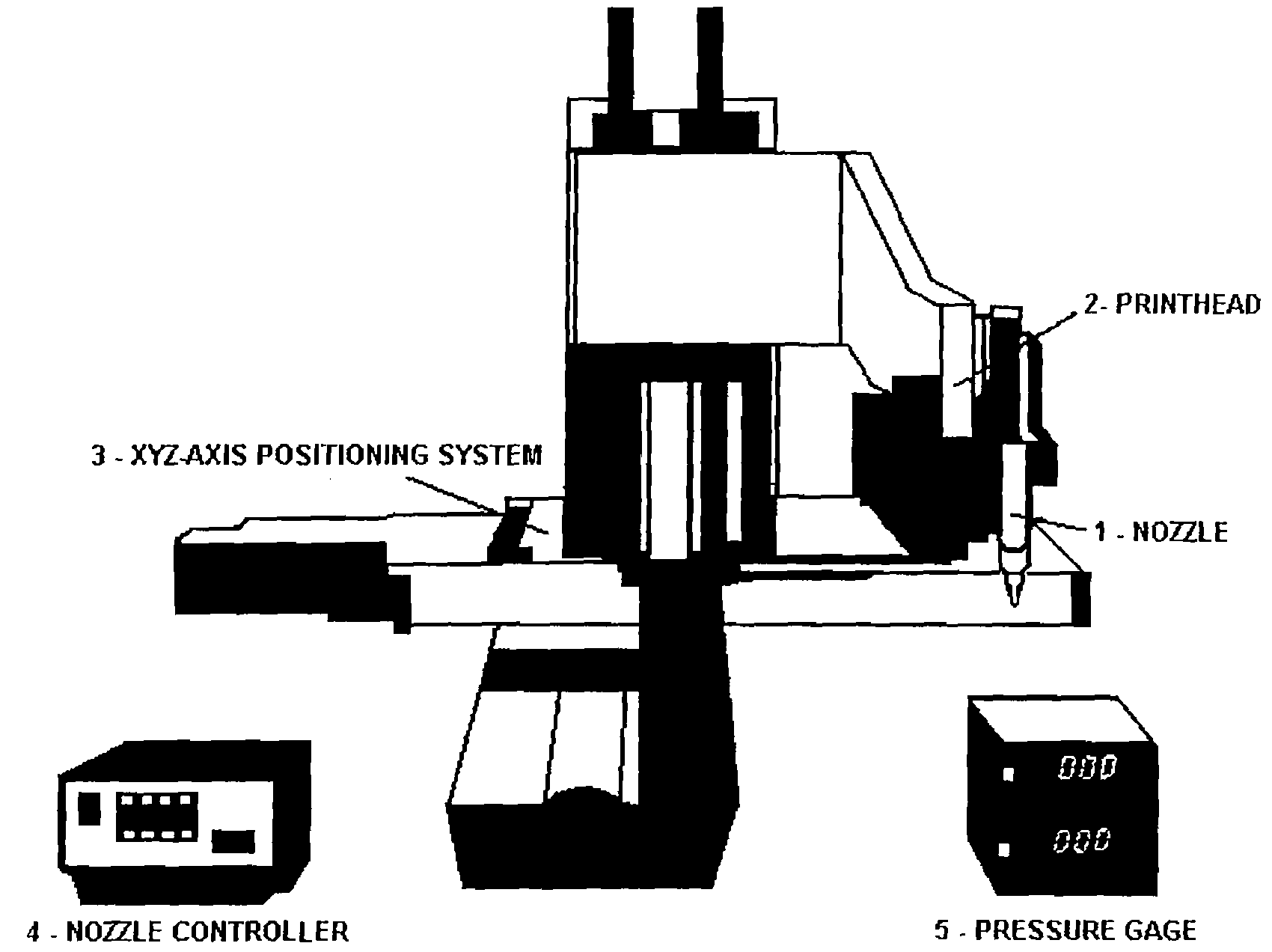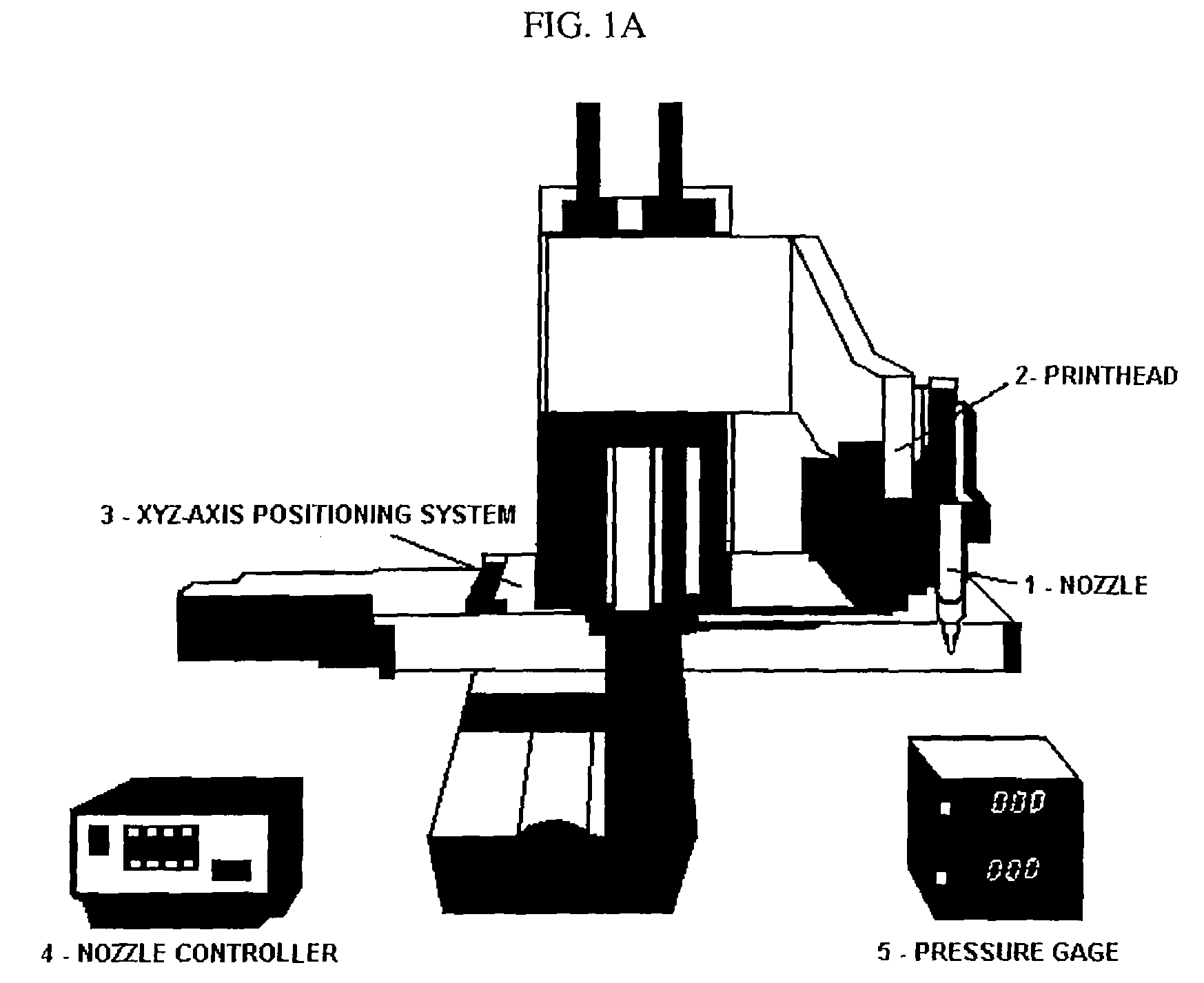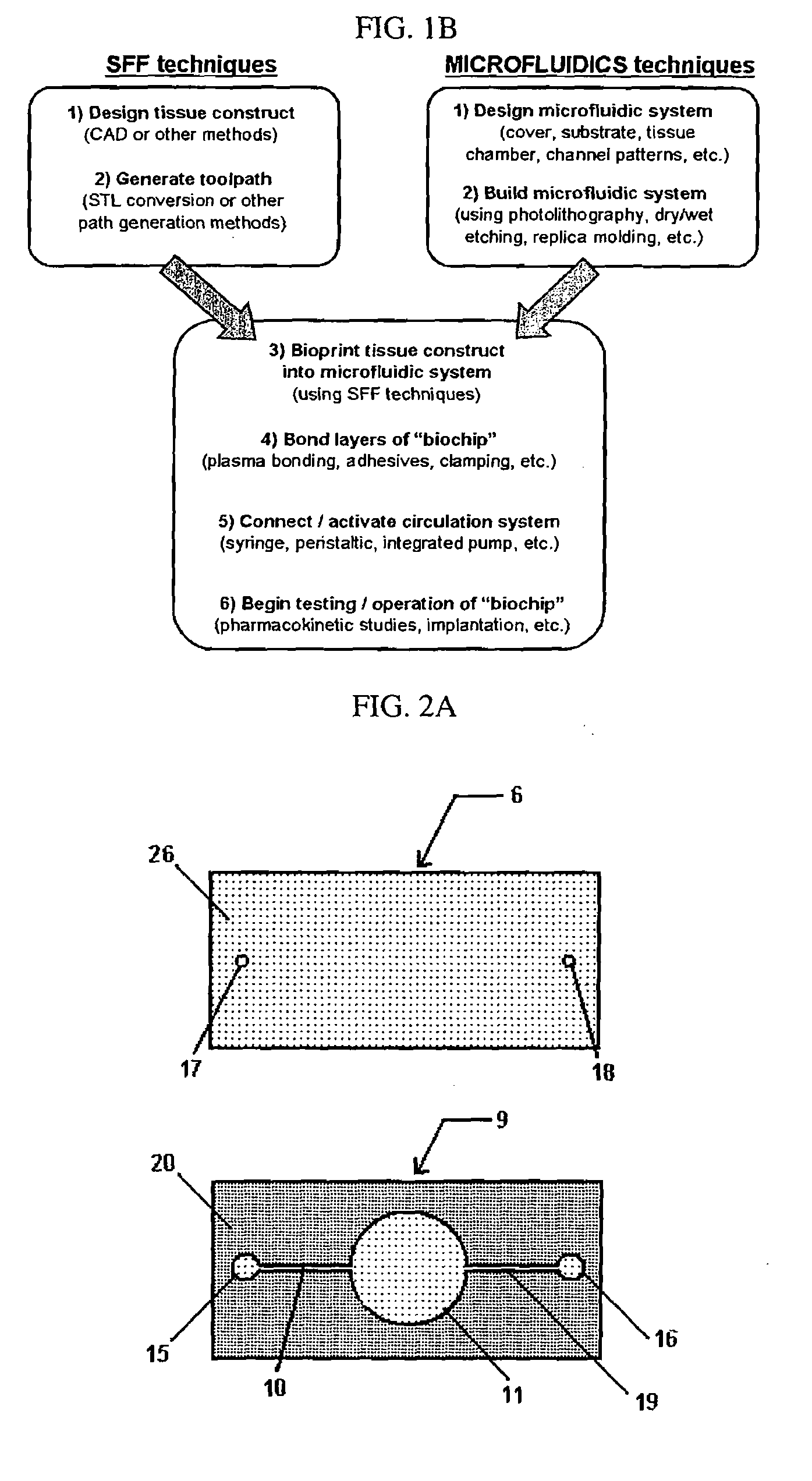Bioprinting Three-Dimensional Structure Onto Microscale Tissue Analog Devices for Pharmacokinetic Study and Other Uses
a tissue analog and three-dimensional structure technology, applied in the field of microfluidic systems, can solve the problems of inability to create high-fidelity three-dimensional tissue analogs, current practice does not permit the control of spatiotemporal placement of cells within a biomaterial matrix, residue formation and subsequent channel occlusion, etc., to achieve the effect of improving hydrophilicity
- Summary
- Abstract
- Description
- Claims
- Application Information
AI Technical Summary
Benefits of technology
Problems solved by technology
Method used
Image
Examples
Embodiment Construction
[0064]The object of the invention is a new device and process for manufacturing such devices that reliably aids in the drug screening and drug discovery process. Additionally, the device will be able to perform metabolic and cytotoxicity studies on a microscale that is comparable to human physiologic scales. Faster drug screening methods with high-throughput capability and portability can lead to significant cost reductions attributed to reduced time and effort in the number of animal and human trial studies conducted. A suitable in vitro drug screening processes can aid in new drug discovery processes.
[0065]The invention further includes a method of making the microfluidic system. Furthermore, the fabrication process of bioprinting has been developed to build a 3-dimensional heterogeneous cell-encapsulated hydrogel-based construct within a microfluidic device which serves as a fluid circulator and as a platform for experimental drug / chemical analysis and toxicology.
[0066]The presen...
PUM
| Property | Measurement | Unit |
|---|---|---|
| diameter | aaaaa | aaaaa |
| volume | aaaaa | aaaaa |
| hydrophilicity | aaaaa | aaaaa |
Abstract
Description
Claims
Application Information
 Login to View More
Login to View More - R&D
- Intellectual Property
- Life Sciences
- Materials
- Tech Scout
- Unparalleled Data Quality
- Higher Quality Content
- 60% Fewer Hallucinations
Browse by: Latest US Patents, China's latest patents, Technical Efficacy Thesaurus, Application Domain, Technology Topic, Popular Technical Reports.
© 2025 PatSnap. All rights reserved.Legal|Privacy policy|Modern Slavery Act Transparency Statement|Sitemap|About US| Contact US: help@patsnap.com



